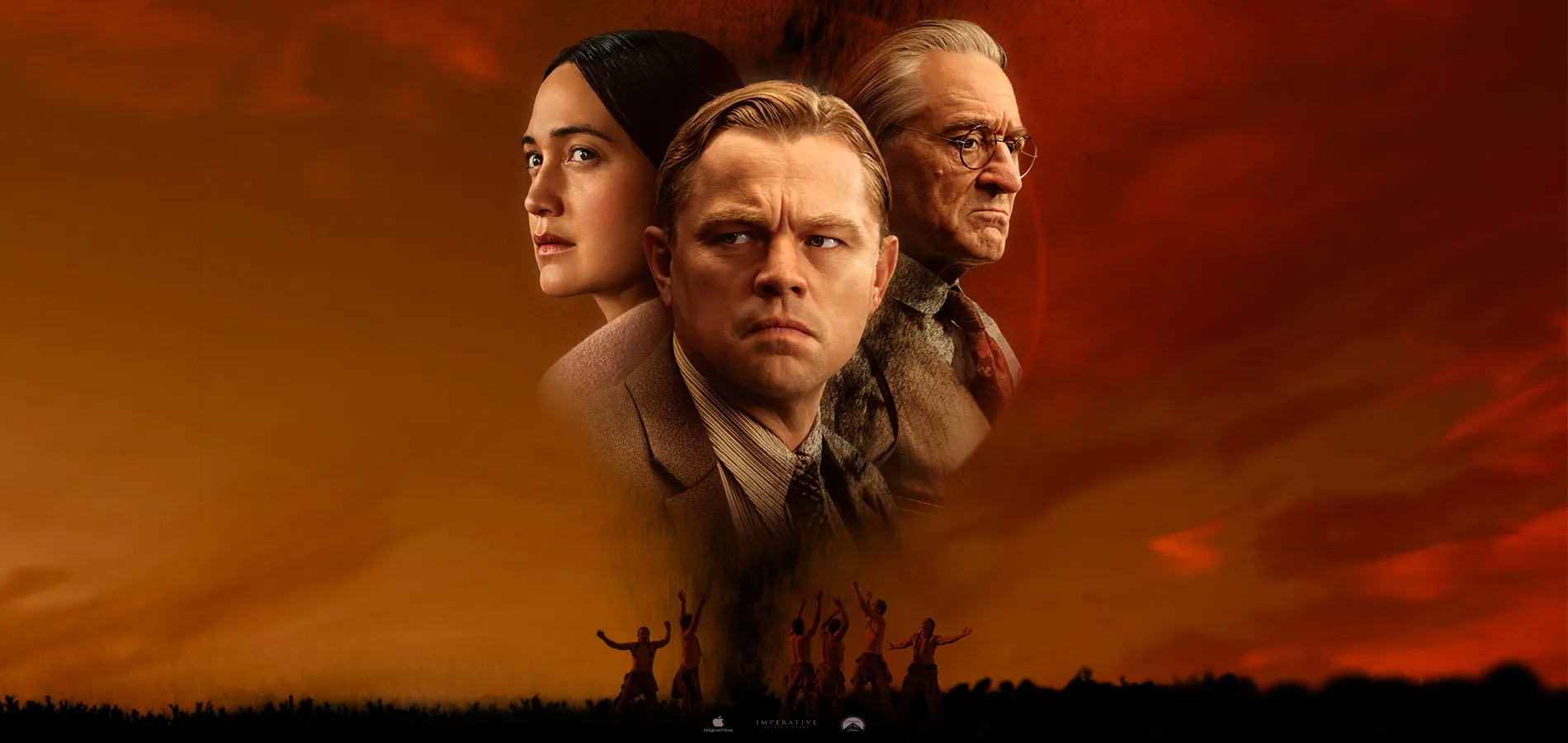Killers of the Flower Moon
The movie is like watching a drunk person for 3 hours, it starts with a lot of energy and momentum then begins rapidly slow down and in the end becomes tired, yet it's still fascinating to watch because it's not enjoyable, but compelling, in just the fact that you're captivated by what your seeing, even though you're not at the edge of your seat and panting with what your seeing. The film immerses you in its world as an outsider. _ observe the events as they occur without having the sense of transportation to the world. The film doesn’t enforce an opinion on the audience.
The central theme of Martin Scorsese’s “Killers of the Flower Moon” is that in the aftermath of trauma, both the affected and concerned individuals harbor somber sentiments. The film illustrates this theme by presenting contrasting responses to traumatic incidents, portraying characters' plans to move forward from the trauma, and displaying how the sum of all their trauma has affected them.
The first way the film illustrates the theme is by depicting contrasting responses to traumatic events. In the aftermath of Minnie's death, Mollie and Hale have varying responses. Mollie’s first scene after Minnie's death is with her kin kneeling by Minnie's corpse lying on a bed. Mollie says, “Minnie. My sister. Wasting illness.” Mollie's expressiveness during the scene is one of misery at the sight of her sister’s corpse, and being surrounded by her kin further emphasizes the suffering she is going through and how she enormously cares about her sister's death despite keeping the same desolate expression and tone of voice that she maintains throughout the film. Conversely, Hale’s first reaction is outside the house, in a conversation between him and Ernest about Minnie’s death. Hale starts the conversation by saying, “Bill Smith [Minnie’s husband] didn’t take the proper care of Minnie the way he could have. To have her sick and die, take her headrights and her land? That oil, which should go to her sister, your wife, well, he’s taking money that, by rights, should go to Mollie.” Hale then continues with, “The mother, Lizzie. She won’t last…..With these women dying from how Osage suffer from illness, you [Ernest] have to make it the headrights come to you”. The way Hale reacts in this speech is with cold calculations of how the aftermath of the trauma can benefit him; his greed is evident in laying out a roadmap of how, once each member of the family dies, their assets will be handed down to a point where Ernest will have control of the headrights. Emphasizing the importance of headrights after a person he was somewhat attached to shows that every decision he makes after trauma is thinking about how the trauma can benefit him.
These two reactions represent the two different sides of the trauma: those who care deeply about it and those who don’t care. Mollie continues he somberness through
When trauma occurs, different sides of the trauma, the one who caused it and the one suffering, react with somberness and lack of extreme emotions towards the anger they truly feel.
In the Osage tribe ritual in Oklahoma, the tribal chief expresses the fears of the future of the tribe's children from the evil colonizers. The people surrounding the chief have faces of _ and _, have been hurt so much by the _ colonizers. This is the first shot of “Killers of the Flower Moon”.
